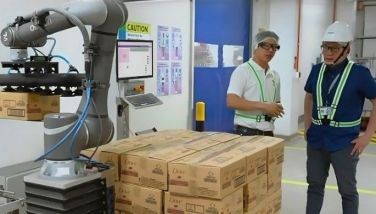Farm tourism booming in Central, North Luzon
MANILA, Philippines — Aside from local destinations like pristine beaches, lush green mountains, and cultural heritage, vast farmlands used for growing crops and rearing animals are among the most prominent features of North and Central Luzon.
Given the accessibility of the provinces and their agricultural lands, investment in farm sites is becoming a trend, allowing farm owners to sustain income while mitigating the impact of weather, pests, and unexpected market fluctuations.
Conceptualized as a new business of attracting visitors to farm sites and letting them experience farming activities first hand, farm tourism has encouraged the rise of economic ventures for agricultural communities.
Connecting communities
Farm tourism took center stage in the recently concluded NLEX Tara Na Sa Norte: Tourism and Travel Fair.
Initiated by the NLEX Corp., the event highlighted North Luzon as a major agro-tourism hub in the country.
Roberto Bontia, senior vice president for Toll Operations and Technology Management of NLEX Corp., said during the travel fair that tourism continuously reveals itself “as a dynamic activity done by both locals and foreigners in an effort to enrich the mind, soul, and body.”
He asserted that tourism these days has evolved, as it is no longer just about attractions. “With the push for sustainable and community-driven tourism travelling became a way to connect communities and individuals,” Bontia remarked, adding that it now involves immersing oneself in a particular community’s environment and heritage.
Bontia said NLEX Corp. continues to discover the wonders that make up the regions, as it affirms its role as a vital partner of the government for tourism development and promotions.
Meanwhile, newly appointed COO of Tourism Promotions Board Marie Venus Tan remarked in her keynote speech that the road networks, such as NLEX and SCTEX, allow tourists to access the regions more easily.
Due to this key infrastructure, she added that an increasing number of tourists avail of travel and recreational activities offered by various farm tourism sites.
Taking root
In a statement, Southeast Asian Regional Center for Graduate Study and Research in Agriculture (SEARCA) director Gil Saguiguit said that farm tourism emerges as a key to Inclusive and Sustainable Agricultural and Rural Development (ISARD) in farming communities.
It provides “a whole new perspective for agriculture toward ISARD” with the help of tourism, while opening up possibilities for diversification of income for small-scale farmers, thus showcasing agriculture not only as a productive business endeavor but also an exciting field for the younger generation, Saguiguit said.
Meanwhile, according to International School of Sustainable Tourism president Mina Gabor, farm tourism will not only increase the incomes of farmers but also spur economic activities of communities engaged in promoting it.
Gabor said that, as farmers were among the most vulnerable to weather disturbances, farm tourism paves a new path towards sustainability. In such case, she added that farmers could contribute significantly to reducing negative climate impact by introducing innovative and more environment-friendly agricultural practices.
Farm tourism
The Department of Tourism and Department of Agriculture have joined efforts to push for the development of the farm tourism sector, as the government recognizes an opportunity to integrate small farmers into the bigger supply chain.
In an interview, DOT Region 3 Tourism Operations Division chief Avon Timbol said that farm tourism has been one of the key thrusts of tourism efforts in Central Luzon.
DOT and DA have been launching lecture workshops on how farm tourism sites can be developed, as well as seminars and assistance programs dedicated to engaging more stakeholders.
Recent data from Department of Tourism (DOT) show that farm destinations constitute around 20 to 30 percent of the overall tourism market in the country. On an average, a day tour in around three farms charges approximately P3,500 per person inclusive of entrance fees and food expenses.
REFMAD Farms in Burgos, Ilocos Norte, for one, takes pride as one of the largest and earliest dragon fruit farms in the country. The farm produces ice cream, vinegar, soap, and coffee with dragon fruit as main ingredient. During off-peak season, the flowers of the dragon fruits illuminate at night and become one of the main attractions in the site.
MP Paradise Farm in Nueva Ecija, on the other hand, offers tour packages that allow guests to explore farm activities first-hand. Tourists can enjoy tree-planting, fruit-picking, fishing, horseback riding, sheep herding, and even kakanin (native rice delicacies) cooking.
Timbol pointed out that farm tourism in the regions is steadily growing. In Central Luzon alone, there are 20 accredited farm tourism sites in the province such as Bulacan, Zambales, and Pampanga, adding that they have been receiving a growing number of requests for accreditation.
- Latest

























